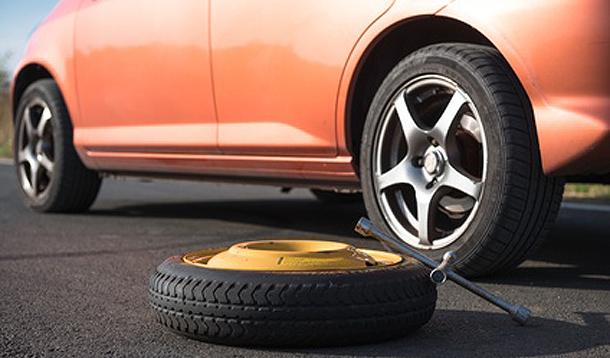
Do you know if your spare tire is in good working condition and ready to be used in case of emergency? When was the last time you checked it?
A recent Kal Tire survey found that more than one-third of Canadian drivers experienced a flat tire last year. The survey also noted that 92% of drivers claimed their spare tire is in good enough or excellent condition, but only 60% of drivers said they checked the condition of their spare tire in the last year! Not safe. Imagine the surprise of getting a flat tire on the highway, hours away from your destination, only to find that your spare tire is not in working condition? Not a scenario anyone wants to be in.
It's important to always travel with a properly inflated spare tire but even more so during the upcoming road trip season.
My experience falls in line with the Kal Tire survey results. Most clients don’t check their spare tire, so we educate them on the importance of their spare, especially if they’re headed out on a road trip soon. We offer customers pointers on how to prepare for a road trip and one of the big tips we always give is to bring their car in for a vehicle check-up at least 2 weeks prior to the trip.
![]() Road Trip Preparation Tip: The next time your vehicle goes in for service, ask your technician to inspect the spare tire to make sure it’s properly inflated and in perfect working condition.
Road Trip Preparation Tip: The next time your vehicle goes in for service, ask your technician to inspect the spare tire to make sure it’s properly inflated and in perfect working condition.
Here are a few things to keep in mind when it comes to your spare tire:
But what if your car doesn’t come with a spare tire? Some manufacturers have eliminated the spare tire to reduce weight and bulk in vehicles and instead are using "run-flat" tires. Something important you need to know about run-flat tires is that they are designed to allow you to continue to drive at a maximum speed of 80kms/hr to reach a service centre, up to 80kms away, if you have a puncture. But the downside to having these "run-flat" tires is that in many cases, they are NOT repairable, and they do cost more than a traditional tire.
There are some things you can do to minimize the likelihood of getting a flat tire in the first place, such as:
Safe travels!
